The last few weeks, TU Delta was on vacation. Meanwhile, students broke one record after another. What did we miss?
Students broke one record after another. (Photo:Delft Solar Boat Team)
August 10 – Self-healing concrete in Palace Het Loo
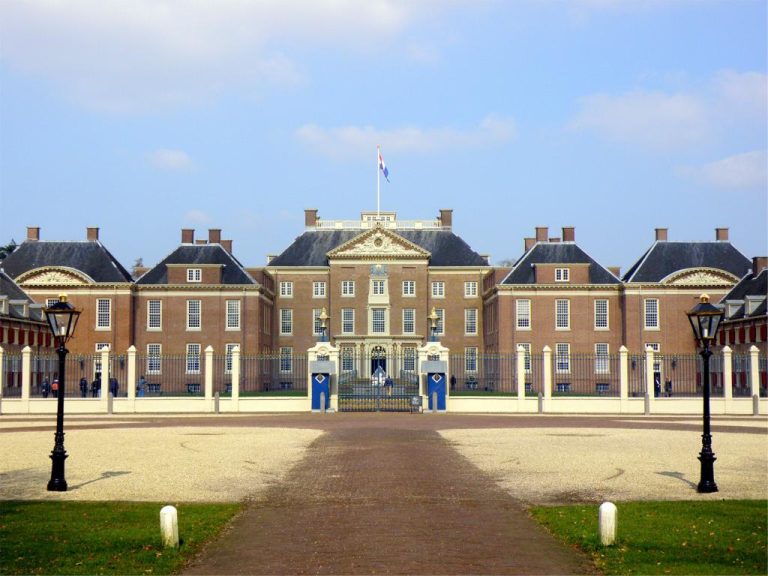

Palace Het Loo. (Photo: Wikipedia)
Palace Het Loo will be fitted with an underground museum space made of self-healing concrete, or so science website Kennislink reported this summer. The self-healing property is created by living bacteria that fill cracks in the concrete.
The Palace in Apeldoorn is undergoing major renovations and will be given an underground extension for exhibitions. That space will be made with five thousand cubic metres of self-healing concrete, an invention of TU Delft microbiologist Henk Jonkers. When the bacteria, so-called alkaline bacteria that like acidic environments, come into contact with moisture (which enters the concrete through cracks), they produce limestone, sealing the crack. This prevents concrete rot.
August 8 – Solar car sets distance record
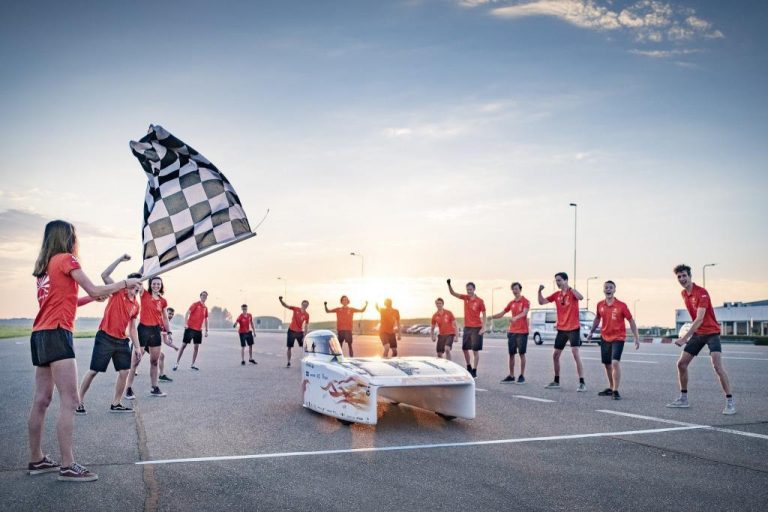

After twelve hours of driving, the Nuna Phoenix finishes at sunset with a new distance record: 924 km in 12 hours. (Photo: Vattenfall Solar Team).
On the test track of the Road Traffic Authority RDW in Lelystad, the Nuna Phoenix passed by three hundred times within 12 hours. The attack on the distance record took place there on August 8th under favourable conditions and with plenty of sunshine. When the black and white chequered flag fell, there were 924 kilometres more on the counter than at the beginning of the day. The previous record of 882 kilometres from 2017 was thus broken.
The Vattenfall Solar Team was in need of a boost. During the last World Solar Challenge, October last year, the Nuna X caught fire and burned out. This was even more tragic because they were ahead in the race with only 250 kilometres to go. The team recovered with the development of a new solar car: the Nuna Phoenix. They planned to take it to the USA for the American Solar Challenge. But then the corona crisis broke out and the team was forced to cancel the registration. The team members looked for another opportunity to test their solar car, and that happened last summer in their own country.
July 29 – Students reveal message from death row


Death cell 601, with on the right side of the bed the white, newly plastered piece of wall. (Photo: Ulrike Grafberger)
A group of bachelor students led by Arts & Materials Sciences Professor Joris Dik (faculty 3mE) made the news at the end of July. They had made a spectacular discovery on death row at the Oranjehotel, the former penal prison in Scheveningen. Using infra-red advanced techniques, in which Dik’s research group has specialised, they were able to make inscriptions readable under the new plastering of the ‘Death Cell 601’. From this a name emerged, a kind of calendar and the words ‘Demand’ and ‘Death’.
“On the basis of that information we were able to establish that Daniel de Blocq of Scheltinga was in Cell 601, a right hand of Mussert”, says Dik. Anton Mussert was installed as leader of The Netherlands by the Nazis in the Second World War. After the war he was condemned to death. De Blocq of Scheltinga was one of Mussert’s collaborators. “The death penalty was demanded against him on September 11th 1945, but he came away lucky.” De Blocq was finally sentenced to twenty years’ imprisonment; he was released in 1953 and died in 1962 in Germany.
July 23 – It suddenly went quiet
Never before has the noise below ground decreased as much as last spring. Measures to mitigate the Covid-19 pandemic caused widespread changes in human activity, leading to a months’ long reduction in seismic noise of up to 50%. The 2020 quiet seismic noise period is the longest and most prominent global anthropogenic (human caused) seismic noise reduction on record. Or so researchers of the Royal Observatory of Belgium and five other research institutes, including TU Delft, wrote in Science on 23 July. Suddenly the researchers could pick up subtle sounds from deep earthquakes in urban areas that are normally not audible. Some researchers are dubbing this drop in anthropogenic noise and pollution the ‘anthropause’.
July 17 – Hyperloop team breaks its own speed record
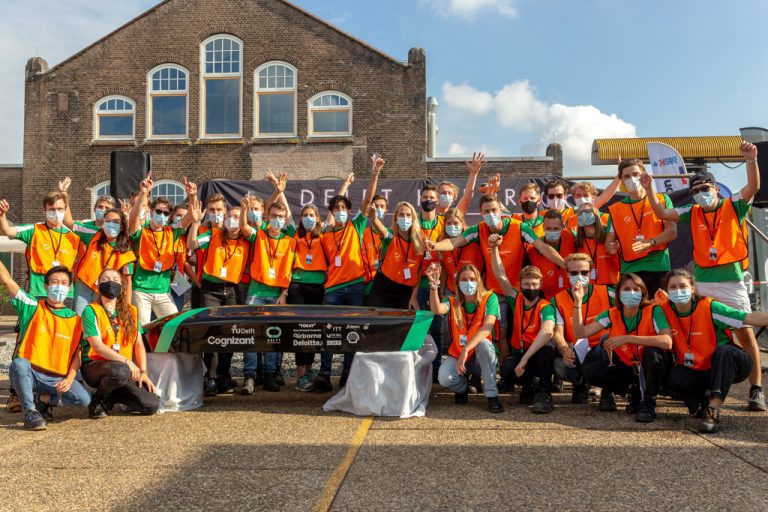

The Delft Hyperloop team celebrates the speed record in Hilversum. (Photo: Delft Hyperloop Team)
With their new prototype Atlas 02, the Delft Hyperloop team reached an astonishing speed of 360 kilometres per hour on a test track of less than 400 metres. The record attempt took place on Friday 17 July on the special test track at the Voestalpine Railpro site in Hilversum.
Hyperloop is a futuristic form of public transport, sprung from the brain of Elon Musk, in which capsules (‘pods’) shoot through vacuum tubes at the speed of an airliner (1000 km/hour).
With the top speed of 360 km/hour, the Delft team IV broke its own previous record of 202 km/hour. This was achieved last year in the 1-km long vacuum tube of SpaceX in Los Angeles. The fastest team at that time was the TU Munich team with no less than 482 km/hour. But, says PR manager Romée Postma, that was without air resistance and on a runway more than five times longer. Team members estimate that their current pod, the Atlas 02, could reach 500 km/hour under those conditions. On the Hilversum track the prototype could also have gone faster if there had been no engine failure during the record attempt. “The technology continues to evolve,” explains Postma.
Due to the intervention of the coronapandemic there was no comparative competition in the US this year and the Delft team decided to work on its own record attempt. Next academic year the development will continue, although at the moment it is not clear in what form due to a rearrangement of the Dream teams.
July 15 – Heat from waterways
Sheet pilings in waterways primarily halt the flow of water. But they can do much more than that. They can also be used as a source of heating and cooling. The technique was recently tested with a set-up in the De Zweth waterway near Rotterdam. By installing heat exchangers in the quay, energy can be extracted from the water flowing along the sheet pilings and from the soil. The project, on which Dr Phil Vardon of the Faculty of Civil Engineering and Geosciences, CRUX Engineering Consultancy and Eindhoven University of Technology, among others, are working, seems promising. Similar trials are underway in Germany.
July 6 – Student makes OV-face cap
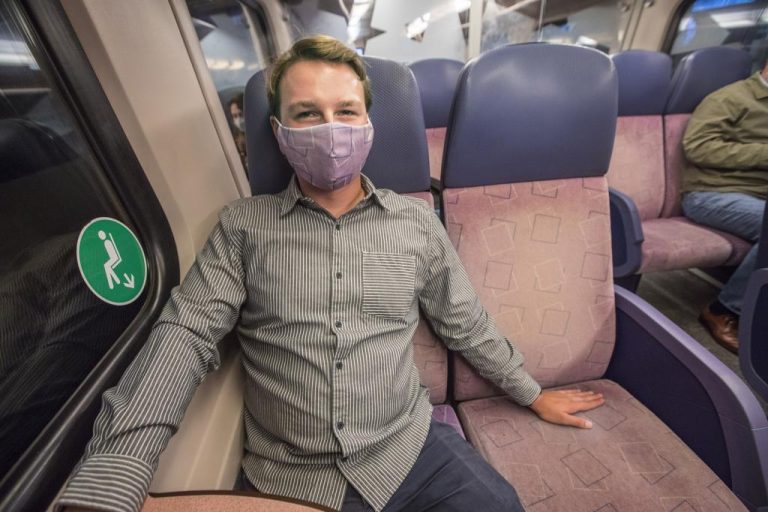

Stijn de Vreede with his camouflage cap. (Photo: Frank Jansen)
TU Delft student Stijn de Vreede entered the AD newspaper with his remarkable mouthpieces, which he offered via Twitter. The reason was his annoyance about the ugly light blue mouth caps that he saw pop up in buses and trains. A camouflage pattern would be much better, he thought. He took a picture of the train seat upholstery, edited it with Illustrator and sent it as a print to a mouthguard manufacturer. He ordered two series of 100 pieces: the pink retro print (a design by Marijke de Goei) and the blue fake leather of later trains. Of these, he still has one copy left. Especially “OV-gekkies” (public transport crazies) were very fond of them, says the master student Transport, Infrastructure & Logistics with a bachelor’s degree in Industrial Design.


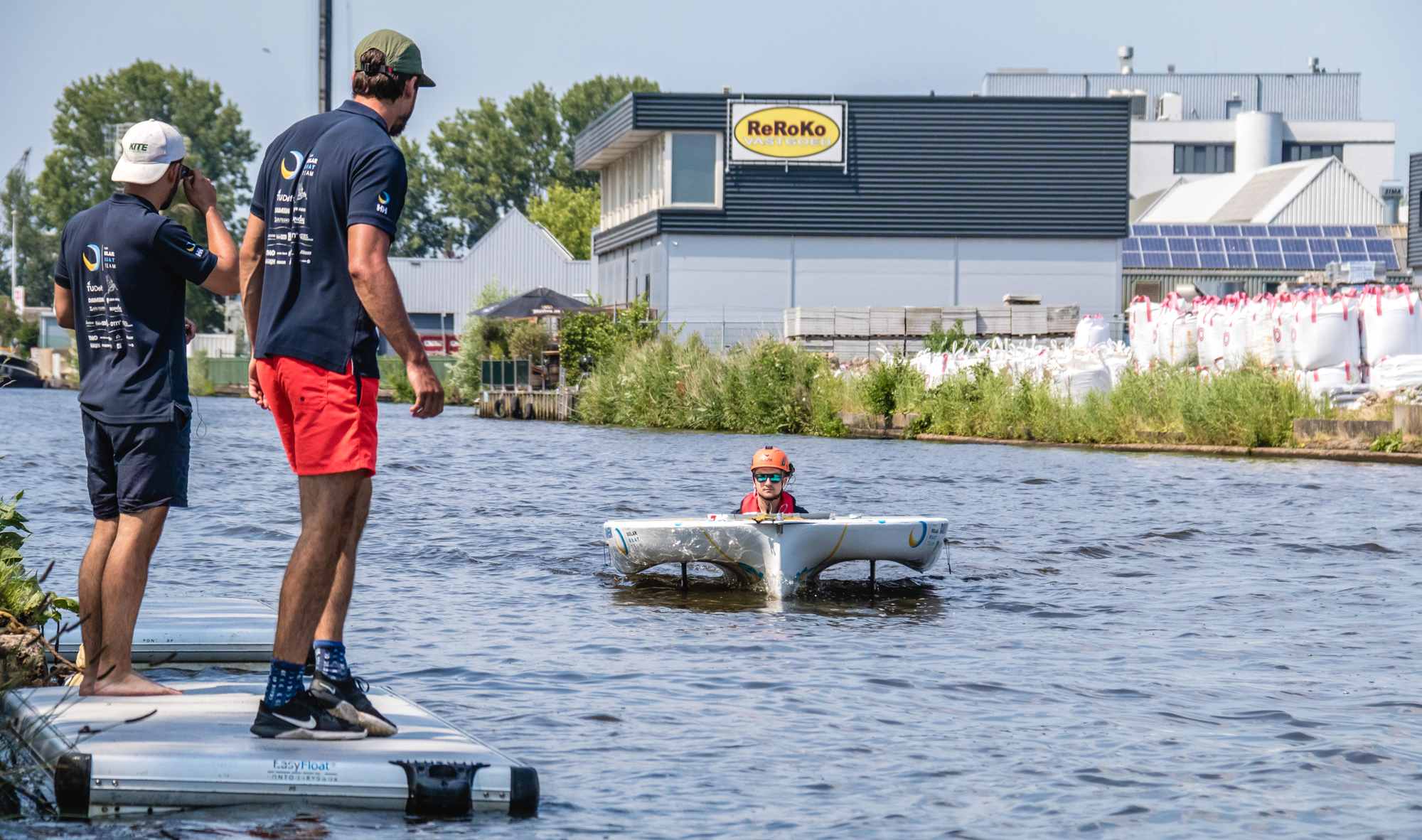
Comments are closed.